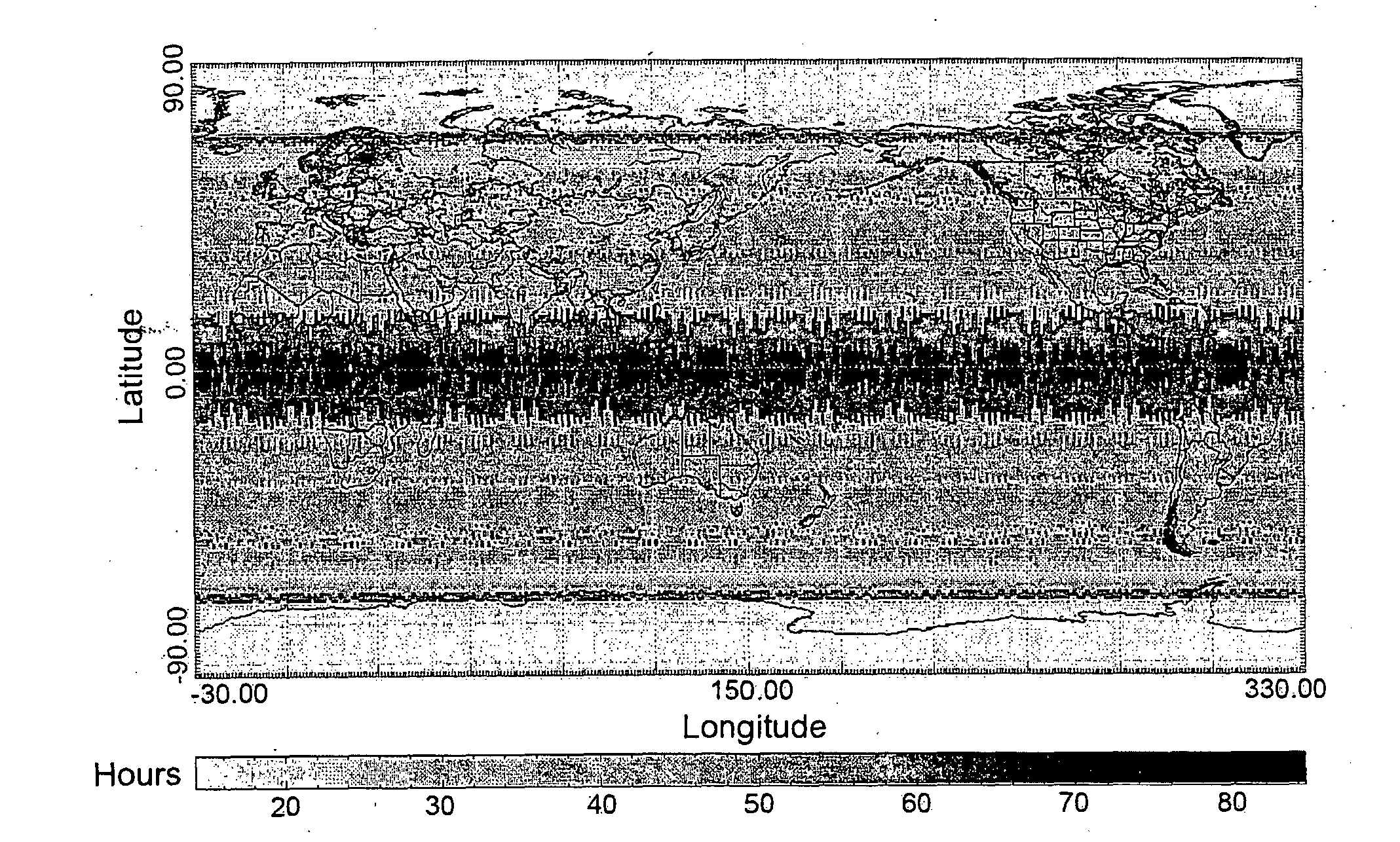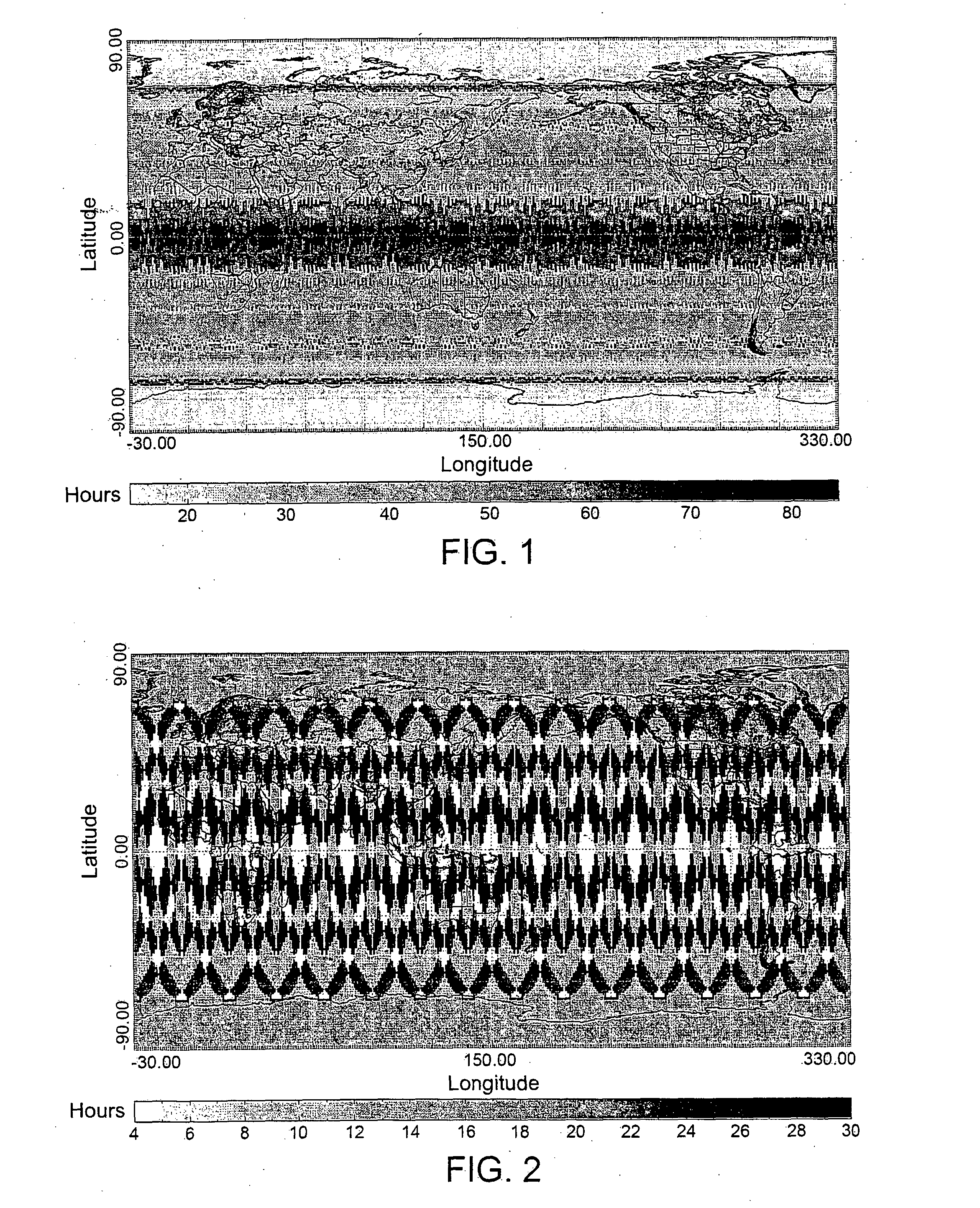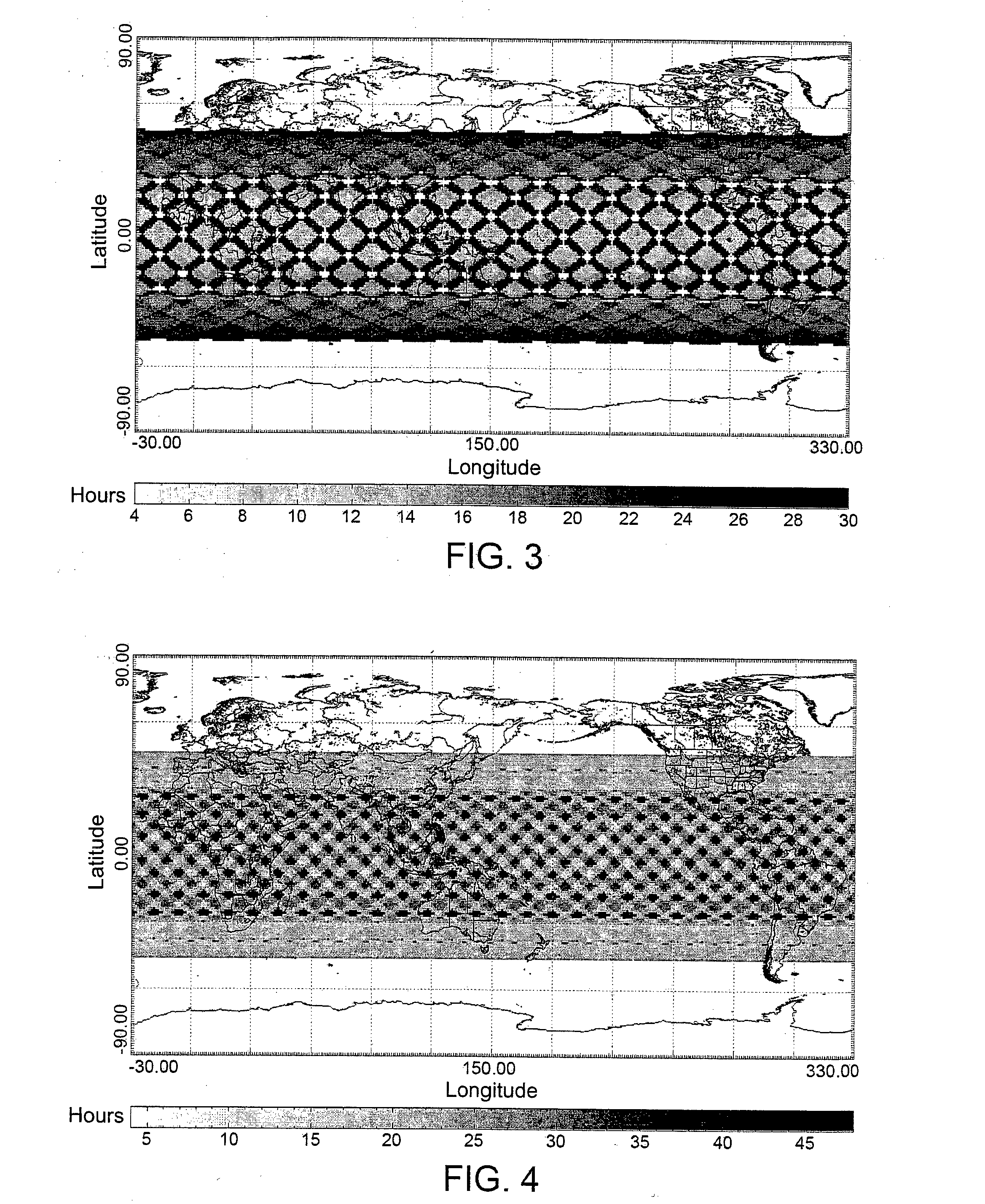Innovative Orbit Design For Earth Observation Space Missions
a technology for space missions and orbits, applied in the field of innovative orbit design, can solve the problems of high cost of satellite remote sensing systems, and high cost of design, and achieve excellent interferometric capabilities, reduce design cost, and good time performance
- Summary
- Abstract
- Description
- Claims
- Application Information
AI Technical Summary
Benefits of technology
Problems solved by technology
Method used
Image
Examples
first embodiment
[0068]In order to better understand the differences between the time performance of the orbit design according to the present invention and that of traditional Earth observation systems, FIG. 1 shows the revisit times with respect to the Earth's surface of the TerraSAR-X satellite (which, as is known, is equipped with a SAR sensor), while FIG. 2 shows the revisit times with respect to the Earth's surface of an Earth observation system according to the present invention, in particular a system based on a single satellite having a polar sun synchronous orbit and a one-day orbital cycle.
[0069]As shown in FIG. 1, the revisit times of the TerraSAR-X satellite are between 60 and 84 hours in the regions around the equator and between 40 and 50 hours in medium latitude regions.
[0070]Conversely, the maximum revisit time of the above-stated Earth observation system according to the first embodiment of the present invention is obviously shortened to 24 hours by design. In particular, the non-a...
second embodiment
[0071]By using an inclined orbit it is still possible to ensure a maximum revisit time of 12-24 hours and it is also possible to optimize the resulting ground grid to obtain areas of predetermined size (for example, in the order of 2400×2400 Km2) such as to ensure complete coverage of the various states. With regard to this, FIG. 3 shows the revisit times with respect to the Earth's surface of an Earth observation system according to the present invention, in particular a system based on a single satellite equipped with a SAR sensor and having an inclined orbit and a one-day orbital cycle. In FIG. 3, it is evident how the coverage is more regular with respect to that shown in FIG. 2 and, above all, how this coverage in continuous in a band of medium latitudes.
[0072]Obviously, it is possible to optimize coverage over different geographic areas by altering the inclination of the orbit to improve coverage over the areas of interest.
[0073]The possibility thus ensues of the system being ...
third embodiment
[0087]To remedy these drawbacks, it is possible to choose an orbit with an orbital cycle of two days instead of just one. Obviously, in this case, the maximum revisit time rises to approximately 48 hours, but this orbital cycle ensures global access (in the case of an inclined orbit, global access within the chosen band of latitudes) and enables increasing the available number of angles of incidence (except for certain areas that are still characterized by just one access in the orbital cycle). With regard to this, FIG. 4 shows the revisit times with respect to the Earth's surface of an Earth observation system according to the present invention, in particular a system based on a single satellite equipped with a SAR sensor and having an inclined orbit and a two-day orbital cycle.
[0088]Obviously, by continuing to increase the orbital cycle, the maximum revisit time rises more and more until it becomes comparable to that of a traditional satellite remote sensing system, thereby losing...
PUM
 Login to View More
Login to View More Abstract
Description
Claims
Application Information
 Login to View More
Login to View More - R&D
- Intellectual Property
- Life Sciences
- Materials
- Tech Scout
- Unparalleled Data Quality
- Higher Quality Content
- 60% Fewer Hallucinations
Browse by: Latest US Patents, China's latest patents, Technical Efficacy Thesaurus, Application Domain, Technology Topic, Popular Technical Reports.
© 2025 PatSnap. All rights reserved.Legal|Privacy policy|Modern Slavery Act Transparency Statement|Sitemap|About US| Contact US: help@patsnap.com



